Hay and straw choppers
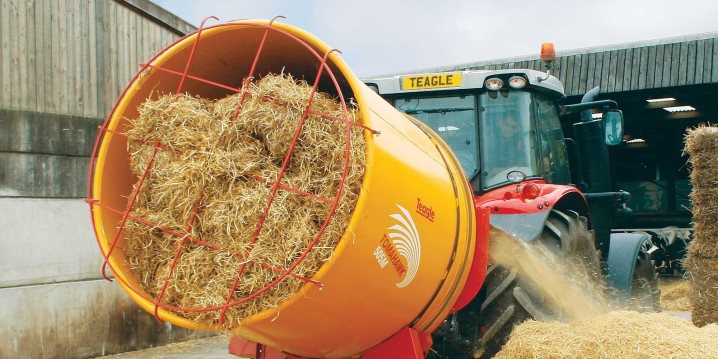
Hay and straw choppers are the faithful helpers of farmers. But in order for them to work effectively, it is required to choose the right straw chopper for bales, trailed crushers for the MTZ tractor and for the combine, manual and mounted options. Additionally, you should familiarize yourself with the order of their use and other subtleties.
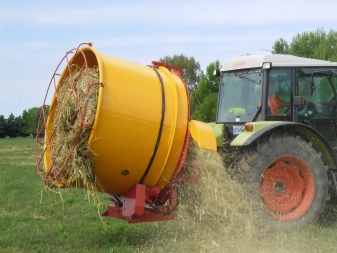
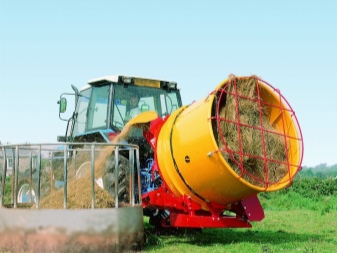
Device and principle of operation
A hay chopper is one of the important devices that can be useful in agriculture along with other small-scale mechanization tools. This technique has a very simple structure. It is not for nothing that in many cases it is not even bought, but made by hand.
The straw chopper works thanks to the knife being pushed onto the rod. The processing of straw or hay takes place inside the hopper.
The question may arise - if everything is so simple, why does not every farmer get by with a self-made solution. The fact is that designs made from an old bucket and unnecessary blades are too unreliable, and their performance is low. Of course, with this technique, you can still prepare food for 10-15 rabbits or cover the floor in a home barn with straw. But getting briquettes requires the use of a more advanced crusher. And yet, the schematic diagram of the device does not change from this.
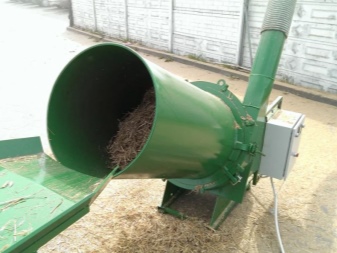
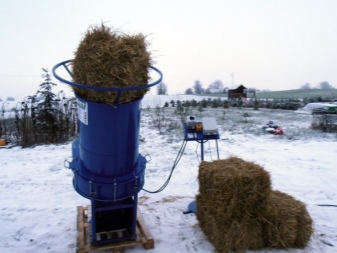
The central part of the apparatus is a metal bunker. Sharply sharpened knives are placed inside it. They are mounted on a steel disc. The disc itself, in turn, is attached to the axis of the electric motor. Professionals have long determined that cylindrical hoppers are the best way to accomplish their tasks. At the very bottom, a branch pipe is made through which the crushed mass is ejected; it is more convenient if it is tilted.
The most complicated is the disk and the knives attached to it. Their design is chosen arbitrarily, but it is required to monitor the balance of the product in the assembly. Otherwise, the vibration will create a lot of unpleasant moments.
The electric motor that rotates the main tools is driven by a separate button. A sieve is used to sort the fractions.
First of all, hay or straw ends up in the neck. Then the mass from there enters the hopper, which serves for the first stage of grinding. Only at the third stage is knife grinding in the drum. Sometimes a rotary unit is also used, which allows you to provide a strictly specified fraction of straw or hay. In this version, the sieve only helps to consolidate the result.
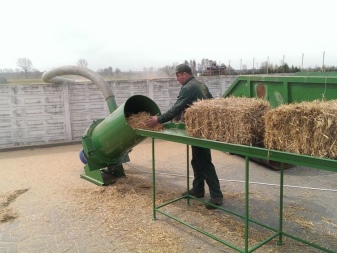
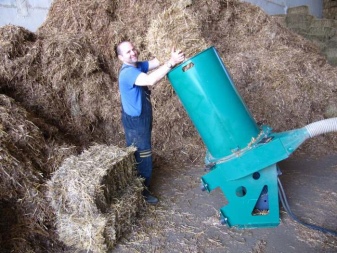
Views
Trailed
This is the name of the models that are attached to the combine or to the MTZ hinged unit for collecting grass, hay and straw. All plants that are harvested by a combine or a tractor are mechanically transferred to the shredder. The mass passed through the grinding unit remains on the ground. You have to collect it, but it's not so difficult anymore. Additionally, all these products are pressed.

Selected
There is already no talk of attaching equipment to agricultural machinery. All such devices are strictly stationary. Haymaking is usually done manually. The launch also takes place at the command of the farmer himself. Technologically, everything is arranged simply - it is almost an ordinary food processor (according to the scheme), only larger and suitable for a large load volume.
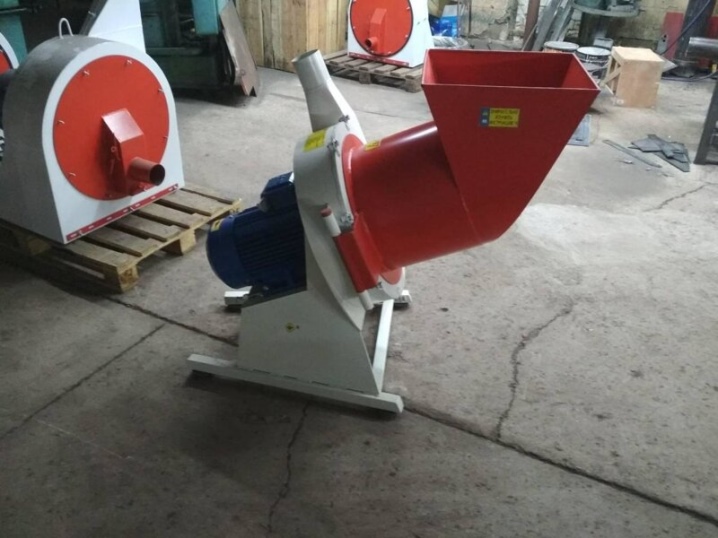
Manual
It is not worth talking a lot about the manual type of shredder. Suffice it to mention that such a category is considered obsolete. Even in farms where it is used traditionally, such devices are gradually being abandoned. But in household use, there will be no alternative to a manual hay cutter for a long time. Complete independence from power supply and fuel resources is guaranteed to justify long and laborious work.
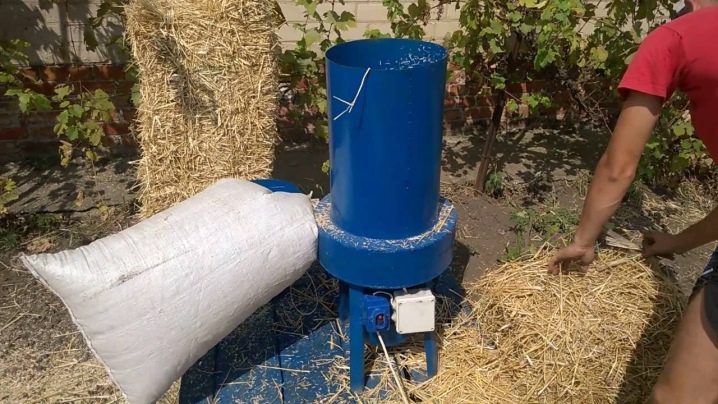
Semi-automatic
Such modifications are equipped with an engine, so there is no longer any need to talk about autonomy. However, raw materials are still bookmarked manually. Overall, this is a decent household shredder that is both productive and relatively simple. It is suitable for family farms and even partly for beginners in the development of agricultural enterprises.
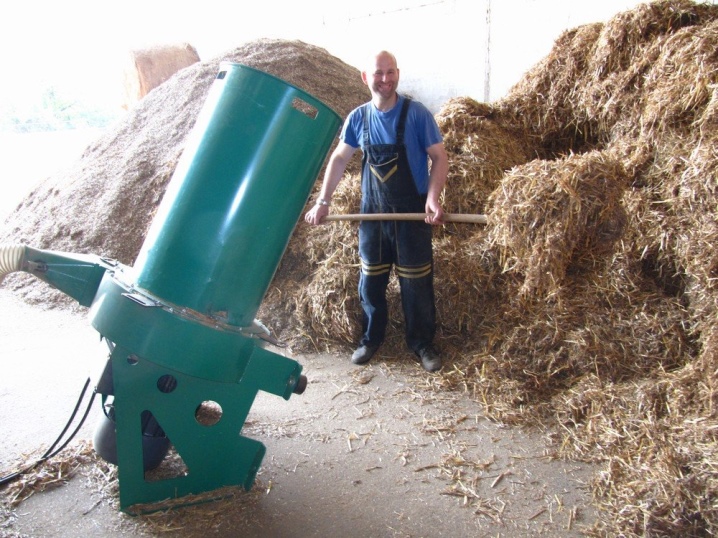
Electrical
This variant is practically a universal chopper for windrowed or neat straw. It develops a lot of capacity - and this is attractive for large farms and agricultural holdings. It can also work for a long time, releasing maximum strength. Such devices require only one thing from operators - a launch command. Therefore, they can be considered a completely successful replacement for manual drumming techniques.
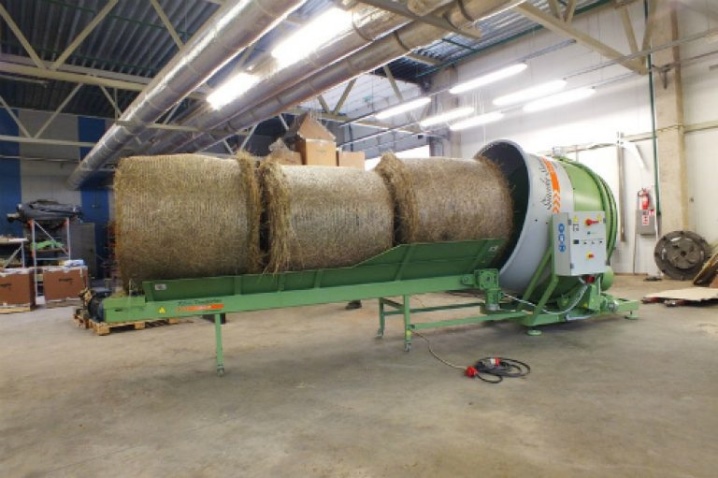
Manufacturers
There are many versions of grinding devices on the Russian market. It is necessary to carefully familiarize yourself with the features of each device.
- Very well proven, for example, installed on a combine device "Niva"... It works successfully with both hay and straw.
- Subspecies, or rather, further technical development - version "Pirs-2"... The difference is that the improved version has a modular design. It is hung on the rear of the combine. A closed version of the bunker is provided. A rotary knife-type mechanism is placed inside it. An important advantage of the device is the simplicity of technical service.
- The group is popular Don-1500... These are all the same mounted combine units.
- The version has the best reputation "Pirs-6"... It is appreciated for its ease of use and ease of mounting. It is also worth noting the uniformity of the spread of the finished product over the field and the presence of an additional mode - collecting the crushed mass into dense shafts.
- The next "contestant" is "Enisey IRS-1200"... The device is capable of chopping and scattering straw. It is used, again, in a mounted version. The outer steel body is very reliable, the double-row knife assembly also does not fail. You can process various types of grass along with straw and hay; uniform spreading is ensured by a special part (throwing wing).
- From semi-automatic devices, it shows itself perfectly "KR-02"... The compact technique also handles grass well. It is recommended for harvesting feed. It is possible to load raw materials either with a pitchfork or manually. The power of the proprietary motor is about 1540 W.
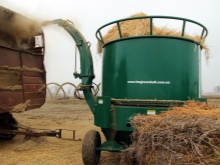
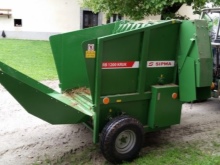
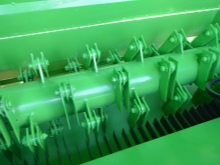
Additionally, it is worth considering the "M-15":
- semi-automatic mobile hay cutter;
- extra strong knives made of steel;
- 3000 W motor;
- option for crushing bark and even thin branches;
- drum spinning speed - 1500 turns per minute.
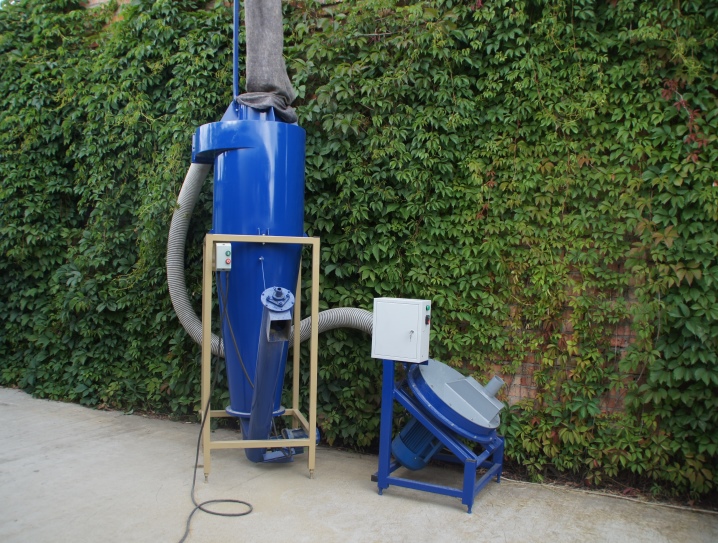
The tractor can be equipped with the FN-1.4A MAZ model. Its main properties:
- equipping with a pneumatic drive and a fan;
- highly productive mode;
- slow mode with deep crushing of the plant bookmark;
- complete replacement of conventional roughage grinders.

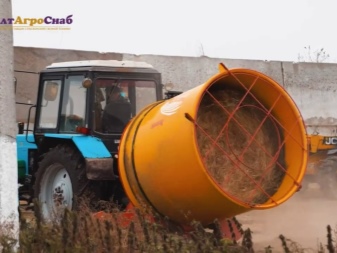
The ISN-2B model is installed on a grain harvester thresher. There she replaces the usual stacker. The device can spread the non-grain portion of various crops across the field. We are talking not only about cereals, but also about sunflowers. What is also important, it will be possible to lay out the unshredded straw in the swath.
It is appropriate to complete the survey on the "K-500". This shredder:
- equipped with a 2000 W motor;
- able to drive up to 300 kg of raw materials in 60 minutes;
- designed for forklift;
- is practical;
- satisfies the needs of even very large farms.
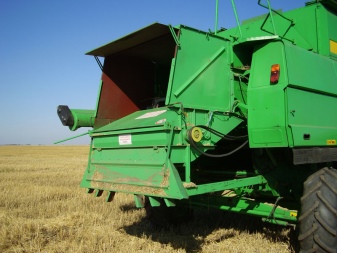
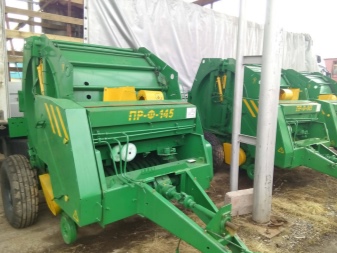
How to choose?
The key indicator in this case is the level of productivity. So, straw choppers for the dacha and for private households usually make relatively little hay or straw. They are economical, but they are unlikely to be able to claim any outstanding performance. And the processing of rough raw materials in such models is not technically feasible. Taking a high-performance machine for a home farm, however, is also hardly justified - it will not have time to recoup even two-thirds of the price by the end of its service life.
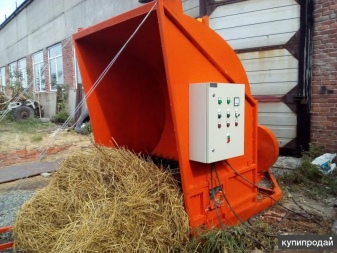

Here are some more recommendations:
- ask in advance if the shredder can be useful for large bales and rolls (if it is planned to be used on a serious farm);
- find out if the model can be used to process tough bark;
- immediately choose a stationary or mobile view of the device;
- focus on the maximum hourly performance and motor power;
- specify the bunker capacity, grinding method and loading option;
- find out whether the device is intended for a tractor, for a combine, and with which specific models of agricultural machinery it is compatible (in the case of a mobile version);
- take into account the dimensions of the device;
- pay attention to the reputation of the manufacturer and reviews of specific models;
- require the presentation of official quality certificates.
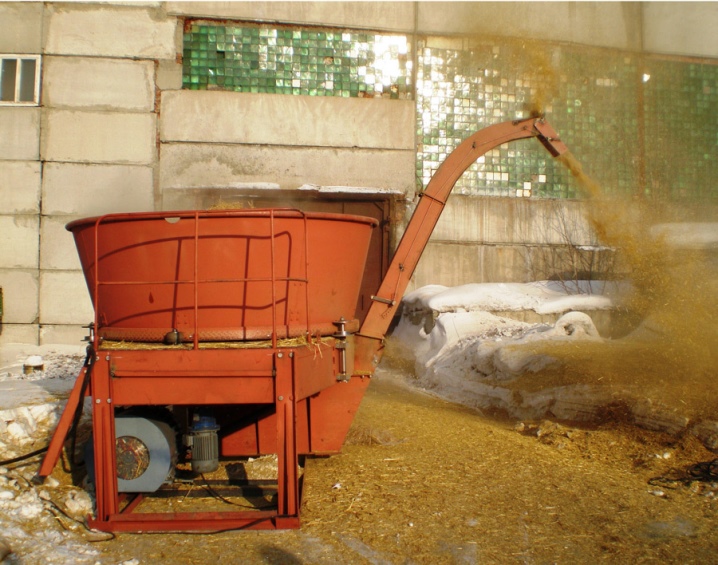



































































The comment was sent successfully.